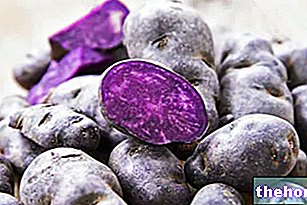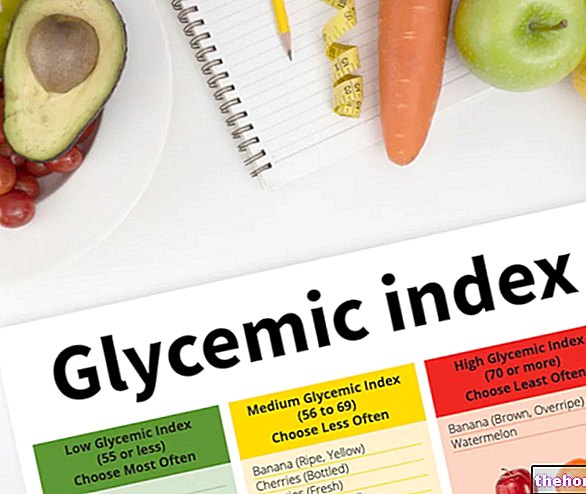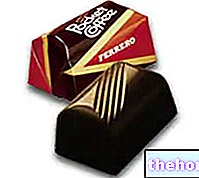
In the following article we will deal with the topic of organic foods, referring specifically to the most up-to-date regulations (18 July 2018) and offering the most objective view possible, both as regards the health and environmental aspects.
, since organic foods and foods are basically obtained through these two activities. Finally, we will make a brief summary of what concerns some items mentioned in the list, let's say the most interesting for consumers.Art. 2. Organic plant production
- 1) In compliance with the agronomic principles referred to in "art. 12, paragraph 1, letters b) and g) of EC regulation no. 834/07, soil fertility and disease prevention is maintained through the succession of cultivation of different plant species on the same plot.
- 2) In the case of arable crops, non-specialized and specialized horticultural crops, both in open fields and in a protected environment, the same species is cultivated on the same surface only after the alternation of at least two cycles of main crops of different species, one of which intended for legumes.
- 3) Notwithstanding the provisions of paragraph 2: autumn-winter cereals (for example: soft and hard wheat, barley, oats, rye, triticale, spelled, etc.) and tomatoes in a protected environment can succeed themselves for a maximum of two crop cycles, which must be followed by at least two main crop cycles of different species, one of which is intended for legumes; b. rice can succeed itself for a maximum of three cycles followed by at least two cycles of main crops of different species, one of which is destined for legumes; c. short-cycle leafy vegetables can happen to themselves for a maximum of three consecutive cycles. Subsequently to the three cycles follows at least one root / tuber crop or one green manure crop; d. cutting crops do not happen to themselves. At the end of the crop cycle, lasting a maximum of six months, the cutting crop is buried and followed by at least one root / tuber crop or green manure.
- 4) In all foreseen cases, the cultivation cycle of the green manure crop has a minimum duration of seventy days.
- 5) All the conformity assessments of the crop sequences must be carried out taking into account the entire rotation; the crop sequences that require the presence of a multi-year herbaceous crop, eg alfalfa, are admissible.
- 6) The paragraphs from n. 1 to n. 5 of this article do not apply to woody fruit crops.
- 7) The Regions and Autonomous Provinces of Trento and Bolzano, for territorial areas subject to ordinary soil and climatic constraints, may adopt further specific exceptions if supported by adequate scientific documentation and subject to an opinion of compliance with European regulations issued by the Ministry.
- 8) The supporting documents, as per art. 3, paragraph 1 and art. 5, paragraph 1 of Regulation (EC) no. 889/2008, which certify the need to use fertilizers and soil improvers, referred to in Annex I of Regulation (EC) No. 889/08 or products for the protection of plants against parasites and diseases referred to in the annex II of Regulation (EC) No. 889/08, are represented by the declaration referred to in art. 63, paragraph 2 of regulation (EC) no. 889/08, signed by the responsible operator.
- 9) If the need for an intervention is not indicated in the declaration referred to in Article 63, paragraph 2 of Regulation (EC) No. 889/08, the supporting document is represented by one of the documents listed below concerning, if each individual use: agronomic technical report; b. soil analysis certificate; c. phytopathological report; d. soil map; e. meteorological and phytosanitary bulletins; f. predictive phytopathological models; g. recording of catches on traps entomological.
- 10) For fertilizers and soil improvers, as per art. 3 paragraph 1 of Regulation (EC) no. 889/08, the national legislative reference is represented by "Annex 13, second part, table 1" List of suitable fertilizers for "use in organic farming", of the legislative decree no. 75/2010.
- 11) The following products can be used in organic farming, if accompanied by a specific declaration, issued by the supplier, certifying that their production did not take place in industrial farms, the following products: manure; b. dried manure and droppings; c. composted livestock manure including manure and composted manure; d. liquid livestock manure; And. digestates from biogas containing by-products of animal origin or digested with material of plant or animal origin referred to in Annex I of Regulation 889/2008.
- 12) The term "industrial farming" referred to in the column "description, compositional requirements, condition for" use "of Annex I of Regulation (EC) no. 889/08, refers to a farm in which at least one of the following conditions occurs: the animals are kept in the absence of natural light or artificially controlled lighting conditions for the entire duration of their breeding cycle; b. the animals are permanently tethered or housed on exclusively grilled flooring or, in any case, do not have a resting area equipped with vegetable litter during the entire duration of their breeding cycle.
- 13) The Regions and the Autonomous Provinces of Trento and Bolzano, in relation to the experiences gained in their territory and after consulting the agricultural professional organizations, may decide that the derogation for the use of copper referred to in point 6 is adopted in the territories of competence. of Annex II of Regulation (EC) no. 889/2008. The Regions and Autonomous Provinces of Trento and Bolzano notify the Ministry of the exemptions granted within thirty days from the date of grant.
- 14) The products listed in Annex 2 (propolis, stone or rock dust, sodium bicarbonate, biodynamic preparations , Edible vegetable oils, Lecithin, Vinegar, Soft and / or Marseille soap, Quick lime, Integral chestnut extract based on tannin, Aqueous solution of ascorbic acid, Vegetable oil treated with ozone, Glycolic extract based on flavonoids) to the present decree, provided that they are used as invigorating, biostimulants, or plant resistance enhancers and when they are not sold under a fancy name. The single commercial product cannot contain any component not explicitly authorized for the type of belonging. The types of products, listed in Annex 2, are placed on the market with labels bearing indications concerning the qualitative-quantitative composition, the methods and precautions of use, the identification of the legal responsible for placing on the market, the production plant and packaging as well as the intended use which, in any case, must not be attributable to the definition of plant protection product referred to in art. 2 of Regulation (EC) no. 1107/2009.
Art. 3. Animal production
- 1) Pursuant to art. 8, paragraph 2 of regulation (EC) no. 889/08, the choice of the breed in beekeeping must favor native breeds according to their natural geographical distribution: Apis mellifera ligustica, Apis mellifera Sicilian (limited to Sicily) and, limited to the border areas, the hybrids resulting from the free crossing with the breeds of neighboring countries.
- 2) In the event that organic animals are not available in sufficient numbers, non-organic animals may be introduced in compliance with the conditions set out in art. 9 (paragraphs 2 to 5) and art. 38 of Regulation (EC) no. 889/2008.
- 3) The Region or the Autonomous Province of Trento and Bolzano where the notification of activities using the organic method was submitted is the competent Authority, referred to in paragraph 4 of art. 9 of Regulation (EC) no. 889/2008, in charge of issuing the authorization for the increase of the maximum percentages of non-biological female mammals allowed for the renewal of the patrimony.
- 4) The operator, in order to demonstrate the unavailability of the organic animals referred to in art. 9, paragraph 1 of Regulation (EC) no. 889/2008, makes the documentation proving the unavailability of organic animals on the market available to the competent Authorities and its own Control Body.
This documentation consists of a minimum of two purchase requests to as many suppliers of organic animals and the relative negative responses. The absence of an answer, within five days from the date of receipt of the request, is equivalent to a negative answer.
The operator, interested in granting the exemption, submits an application to its Control Body which, having drawn up a specific technical report including the assessment of market unavailability of organic animals, presents a formal request for clearance to the competent Authority.
The competent authority, within thirty working days from the date of submission of the request for authorization, accepts and / or rejects the application. The institute of silent assent is applied, as per art. 20 of the law of 7 August 1990, n. 241 except for different provisions adopted by the regions and autonomous provinces of Trento and Bolzano.
- 5) By «significant extension of the company», as per letter a), paragraph 4 of art. 9 of Regulation (EC) no. 889/2008, means an expansion of the "production units", defined in letter f), art. 2 of Regulation (EC) no. 889/08, such as to allow an increase in the adult animal capital in production equal to at least 20% for adult cattle and 30% for the other categories.
- 6) The cooperation agreements, provided for in paragraph 3 of Article 3 of Regulation (EC) No. 889/2008 cannot contribute to the determination of the "significant extension of the company".
- 7) With reference to the list referred to in art. 12, paragraph 3, letter e) of Regulation (EC) no. 889/2008, which provides for the maximum number of poultry contained in each shelter, the "pullets" category is to be understood as included in the category of laying hens (point ii).
- 8) With reference to art. 12, paragraph 5, paragraph 2, of Regulation (EC) no. 889/2008, the Ministry, having heard the permanent technical table on organic farming referred to in the D.D. n. 631 of 9 April 2013, with a directorial decree, establishes the criteria for defining slow-growing strains.
- 9) Pending the definition of the criteria referred to in paragraph 10, the Ministry compiles and updates, after consulting the permanent technical table on organic farming, the list of slow-growing genetic types referred to in Annex 8, for the sole purpose of definition of the minimum slaughter age referred to in Article 12, paragraph 5, paragraph 1, of Regulation (EC) No. 889/2008.
- 10) For "grazing areas for civic use", referred to in point v) of letter b) of "Article 14 of Regulation (EC) No. 834/2007 and for" common grazing areas "referred to in paragraph 3 of art. 17 of Regulation (EC) no. 889/2008, are meant: areas owned by public bodies; b. areas indicated by the law of 16 June 1927, n. 1766 and subsequent amendments; c. areas which, in any case, are subject to civic grazing rights.
- 11) The regions and autonomous provinces of Trento and Bolzano are the competent authorities to establish, if necessary, whether the "public or private grazing area, of interest for organic farming, is to be considered a" common grazing area ", even in the case of areas deriving from duly regulated and registered forms of private pasture management agreements.
- 12) The supporting documents relating to: «use of the provisions» referred to in Article 17 of Regulation (EC) No. 889/2008; 23 of Regulation (EC) no. 889/2008; c. "Compliance with the provision" relating to the ban on the sale of the product with the organic name in the event of application of "art. 41 of Regulation (EC) no. 889/2008; d." Use of non-organic food of agricultural origin "referred to to "art. 43 of Regulation (EC) no. 889/2008; And. "Use of derogations" referred to in "Article 47 of Regulation (EC) No. 889/2008; they correspond to ordinary company registrations in compliance with current national legislation.
- 13) The practices referred to in paragraph 1, art. 18 of Regulation (EC) no. 889/2008, are allowed following the mandatory and binding opinion of a veterinarian of the competent health authority for the area.
Among the practices referred to in paragraph 1, art. 18 of Regulation (EC) no. 889/2008 includes the cauterization of the corneal outline; for this practice the opinion of the aforementioned veterinarian is given to the individual farm, to the persistence of the conditions that determined it, for safety reasons or in order to improve health, the animal welfare or hygiene.
The practices referred to in this paragraph must be carried out in compliance with the provisions of point 19 (Mutilation and other practices) of the annex to Legislative Decree no. 146 of 26 March 2001 and the current legislation on the protection of animals. L " Control body to which the operator is subject, informed in advance by the same operator, verifies compliance with the established procedures.
- 14) The adverse climatic conditions, which can threaten the survival of the hives and which allow the feeding with honey, sugar or organic sugar syrup as per art. 19, paragraph 3 of Regulation (EC) 889/08, are those that, by way of example, can cause the following situations: insufficient food availability, understood as a whole both as "stocks" and as "sources of foraging", nectar , pollen and honeydew; b. risk of spreading of infectious states.
- 15) For the creation of the sanitary vacuum in the poultry farm, as per paragraph 5, art. 23 of Regulation (EC) no. 889/2008, the period during which the outdoor park must be left to rest between " breeding of one group and the next is not less than forty days.
- 16) The term "feed", referred to in letter a) of Article 32 of Regulation (EC) No. 889/2008, also means feed materials as defined in letter g), paragraph 2, art. 3 of Regulation (EC) No. 767/2009.
- 17) The competent authority that establishes the number of adult animal units equivalent to the limit of 170 kilograms of nitrogen per year / hectare is the region or the autonomous province of Trento and Bolzano with territorial jurisdiction.
The competent Authorities take into account, for guidance, the tables set out in Annex IV of Regulation (EC) no. 889/2008, of the ministerial decree of 25 February 2016, n. 5046 and Directive 91/676 / EEC.
The regions and autonomous provinces of Trento and Bolzano communicate to the Ministry the measures adopted pursuant to this paragraph.
- 18) The wax, referred to in paragraph 5 of art. 38 of regulation (EC) 889/08, also intended as ready-to-use wax sheets, is obtained by operators subjected to the control system that guarantees, at every stage of the process of transformation of the wax, traceability and origin of the same.
- 19) The authorization, provided for by Regulation (EC) 889/2008, Annex VI, point 3, letter a) (vitamins), in the "Descriptions and conditions for use", concerning the possibility of use for ruminants of feed containing vitamins A, D and E obtained with synthetic processes and identical to vitamins deriving from agricultural products, is attributed to the territorially competent regions and autonomous provinces of Trento and Bolzano.
Summary of what concerns processed products
Processed products are those obtained mainly from ingredients of agricultural origin (> 50%). In this regard, the use of sodium nitrite and potassium nitrate for the processing of meat products (due to the absence of alternative methods) is authorized without the obligation of any demonstration by the operator who intends use them. However, it does not apply to the production of bone-in hams and culatelli, in which the producer is obliged to demonstrate the need.
Summary of what the retention period is about
The start of the conversion period coincides with the completion date of the notification procedure, but the competent authority may decide to retroactively recognize any previous periods as the conversion period. The regions and autonomous provinces of Trento and Bolzano carry out the retroactive recognition.
Summary of what concerns the exceptional production rules
Fixed housing is authorized in "small holdings", understood as those with a total number of fifty animals. The "products" that cannot be sold with the organic denomination are to be understood as the products of the hive. The introduction, in the organic production units, of poultry reared with non-organic methods less than three days of age is allowed. ), respecting a conversion time of six weeks, but only in the case of the first constitution, renewal or reconstitution of the poultry heritage - regions and autonomous provinces of Trento and Bolzano join together - making a copy of the of the «Communication of the beginning of the breeding cycle of chickens reared with non-organic methods». The demonstration of the absence of unauthorized substances in the wax used must be supported by analytical results. The regions and autonomous provinces of Trento and Bolzano, in certain areas of their territory, authorize the use of non-organic feed by individual operators for a period of time not exceeding one year and to the extent that corresponds to the loss of forage production. .
Summary of what concerns labeling
The code number of the Control Body that appears on the label is represented by the code attributed by the competent authority of the Ministry of Agricultural, Food and Forestry Policies to each Control Body at the time of authorization to operate. The code number consists of the initials « IT ", followed by the term" BIO ", followed by a three-digit number, established by the Ministry, and must be preceded by the words:" Control Body authorized by MIPAAF. "The Control Bodies assign a code number to all operators controlled (to ensure the traceability of the products at all stages of production, preparation and distribution). On prepackaged products from organic farming, the name or company name of the operator who carried out the most recent production or preparation must be indicated, therein including the labeling, as well as the identification code assigned by the Control Body. This wording must be placed in the same field of vision as the EU organic logo.
microorganisms, such as fungal ones, can produce toxins that are also very dangerous for human health.
Let me be clear, this is absolutely not to be interpreted as a stance; it is pure semantics, from which, however, the correct information derives.
Organic farming certainly has a noble but almost utopian intent, that is to promote the eco-sustainability of agriculture and breeding, improving the living conditions of creatures and, at the same time, improving the healthiness of the products obtained. In the past it was considered an approach almost utopian, while today - also thanks to numerous revisions - it has become a reality. But at what price? Why not extend organic to all production cycles?
Because fruit, vegetables and organic grains must in any case comply with criteria of microbiological safety, wholeness and palatability; ergo, if "the apple is ugly", it is not salable. The same applies to breeding, where restrictions on the use of drugs can create real epidemics forcing the total loss of animals. Suffice it to say that, for production costs and for the amortization of any losses, an organic chicken can cost almost three times that of one grown with the conventional method. On the average Italian's family budget, this increase weighs much too much.
With a bit of malice then, I would insinuate a doubt in the already tormented minds of consumers. Who assures us that an organic is actually such? as is the case with the traditional system. It is therefore logical to deduce that a farmer caught by ten days of uninterrupted rain a week after harvest, could also decide to make an exception to the rule - "crossing his fingers" as regards controls Just as a poultry farmer might succumb to the desire to limit an epidemic by administering some antibiotic. This is how any bio can be transformed, from a chemical and pharmacological point of view, into a food worse than a conventional one.
Over time, however, even the supporters of organic have learned to "give a blow to the barrel and one to the circle". By limiting producers less and more reasonably, a greater balance has been created, also reducing cases of food fraud. Reading the articles of the legislative decree, we can appreciate several "exceptions" reasonably allowed to allow producers to align themselves, without having to "close the shack".
Public opinion therefore says "yes to organic" ... but possibly with the wallets of others!
with self-produced smoothies (they are not homogenized), on the other hand, it has the great advantage of accustoming the child to "real" flavors and textures. What is the role of organic in all this? Nobody. Organic food and products do not even affect this aspect.



























